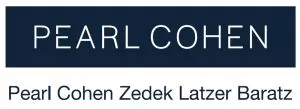The Federal Reserve is continuing to release new clarifications and changes to its Main Street Lending Program (the Program) after seeking input from U.S. banks and businesses, and is continuing to update its guidance on the Program and provide periodic reports to Congress on the Program's progress. Under the Program introduced on April 9th, the Fed has created a special purpose vehicle (SPV) through which it aims to "to purchase participations in loans originated by eligible lenders" to support lending to small and medium-sized businesses negatively affected by the Covid-19 pandemic.
Unusually for the Fed, the Program will be administered and managed by the Fed itself through the Federal Reserve Bank of Boston, which was in charge of creating the SPV which manages and operates the Program's three lending facilities: the MSNLF, MSELF, and MSPLF. One of the aims of the Program is to support lending to businesses that were unable to receive loans provided under the Paycheck Protection Program (PPP) which is administered by the Treasury Department and Small Business Administration. Unlike PPP loans, loans under the Fed's Program are full-recourse loans that are not forgivable.
Under the Program, in order to reduce participating lenders' risk and exposure, the Fed, through the SPV set up by the Boston Fed, will purchase up to 95% of a loan from the participating ender, leaving just 5% with the lender that originated the loan. An eligible lender must retain 5% of the loan until (i) it matures or (ii) the SPV or another governmental assignee holds an interest in the loan in any capacity, whichever comes first. Lenders will also be able to charge and collect a 1% fee on the loans.
The Program will cease purchasing participations in eligible loans on September 30, 2020 unless the Program is extended.
The Program is designed to attract a wide range of firms and banks that the Fed will rely on to underwrite and extend the loans.1 However, so far, commercial interest in the Program has been relatively limited because companies in dire need of cash are not likely to be approved, while more creditworthy borrowers are likely to find similar or better terms on their own.2
Some aspects of the Program have given banks reason to pause.3 Specifically, because principal payments are deferred for two years, 70% of each loan will be due in a lump-sum payment at maturity.4 As a result, lenders have expressed concern about issues after term and potential losses.5
Borrower Eligibility
As outlined in Section E of the Program's FAQs, which are periodically updated, businesses created or organized in the U.S. prior to March 13, 2020 that were in good financial standing are eligible borrowers if, together with their affiliates, they have either (i) no more than 15,000 employees or (ii) 2019 annual revenues of less than $5 billion.
Additionally, eligible borrowers must have significant operations and a majority of employees based in the U.S. To determine if an eligible borrower has "significant operations" in the U.S., the business' operations should be evaluated on a consolidated basis together with its subsidiaries, but not its parent companies or sister affiliates.
Further, an eligible borrower may be a subsidiary of a foreign company, provided that the borrower itself is created or organized in the United States or under the laws of the United States, and the borrower has significant operations in and a majority of its employees based in the United States. However, an eligible borrower that is a subsidiary of a foreign company must use the proceeds of a Main Street loan only for the benefit of the eligible borrower, its consolidated U.S. subsidiaries, and other affiliates of the eligible borrower that are U.S. businesses. The proceeds of a Main Street loan may not be used for the benefit of an eligible borrower's foreign parents, affiliates or subsidiaries.
A business that received an SBA PPP or EIDL loan may still be eligible for a loan under the Program if it also meets the eligible borrower criteria. However, as described in Section G of the FAQ, if an eligible borrower had other loans outstanding with an eligible lender as of December 31, 2019, such loans must have an internal risk rating equivalent to a "pass" in the Federal Financial Institutions Examination Council's supervisory rating system on that date. An eligible borrower must refrain from repaying the principal balance of, or paying any interest on, any debt until the eligible loan is repaid in full, unless the debt or interest payment is mandatory and due. Additionally, as set forth in Section H of the FAQ, the eligible borrower must commit that it will not cancel or reduce any of its committed lines of credit with the eligible lender or any other lender.
Furthermore, an eligible borrower must certify that it has a reasonable basis to believe that, as of the date of origination of the eligible loan and after giving effect to such loan, it has the ability to meet its financial obligations for at least the next 90 days and does not expect to file for bankruptcy during that time period. An eligible borrower that participates in the Program is asked to make commercially reasonable efforts to maintain its payroll and retain its employees during the time the eligible loan is outstanding.
Lender Eligibility
An eligible lender is a U.S. federally insured depository institution, a U.S. branch or agency of a foreign bank, a U.S. bank holding company, a U.S. savings and loan holding company, a U.S. intermediate holding company of a foreign banking organization, or a U.S. subsidiary the foregoing.
Key Terms
The Main Street Lending Program includes three tiers of loans - the Main Street New Loan Facility (MSNLF), the Main Street Priority Loan Facility (MSPLF), and the Main Street Expanded Loan Facility (MSELF) - which share a number of features, including eligibility criteria for borrowers and lenders, a five year maturity date, interest rate, deferral of principal for two years, deferral of interest for one year, may be either secured or unsecured, and ability of the borrower to prepay without penalty.
Additionally, the loans all have a principal amortization of 15% at the end of the third year, 15% at the end of the fourth year, and a balloon payment of 70% at maturity at the end of the fifth year. Some distinct features of the loans include how each loan interacts with the eligible borrower's existing outstanding debt, including with respect to the level of pre-crisis indebtedness an eligible borrower may have incurred. The portion of any outstanding PPP loan that has not yet been forgiven is counted as outstanding debt for the purposes of the Main Street maximum loan size test.
Main Street New Loan Facility (MSNLF)
MSNLF loan amounts generally range between $250,000 and $35 million. The maximum size of the loan made in connection with the MSNLF cannot, when added to the eligible borrower's existing outstanding and undrawn available debt, exceed four times the eligible borrower's adjusted 2019 earnings before interest, taxes, depreciation, and amortization ("EBITDA").
The features of loans originated in connection with MSNLF are provided in the following term sheet.
Main Street Priority Loan Facility (MSPLF)
MSPLF loan amounts generally range between $250,000 and $50 million. The maximum size of a loan made in connection with MSPLF cannot, when added to the eligible borrower's existing outstanding and undrawn available debt, exceed six times the eligible borrower's adjusted 2019 EBITDA. At the time of origination and at all times thereafter, the eligible loan must be senior to, in terms of priority and security, the eligible borrower's other loans or debt instruments, other than mortgage debt.
The features of loans originated in connection with MSPLF are provided in the following term sheet.
Main Street Expanded Loan Facility (MSELF)
MSELF was designed to meet the needs of borrowers with existing loan arrangements, particularly those with larger and more complex existing loans, where pre-existing loan documentation can be used. MSELF loans enable eligible lenders to increase (or "upsize") an eligible borrower's existing term loan or revolving credit facility.
The upsized loan is a five-year term loan ranging in size from $10 million to $300 million. The maximum size of a loan made in connection with MSELF cannot, when added to the eligible borrower's existing outstanding and undrawn available debt, exceed six times the eligible borrower's adjusted 2019 EBITDA. At the time of upsizing and at all times thereafter, the upsized loan must be senior to, in terms of priority and security, the eligible borrower's other loans or debt instruments, other than mortgage debt.
The features of loans originated in connection with MSELF are outlined in the following term sheet.
Application Process
To obtain a loan under the Program, an eligible borrower must submit an application and any other documentation required by an eligible lender to such eligible lender. Eligible borrowers should contact an eligible lender for more information on whether the eligible lender plans to participate in the Program and to request more information on the application process.
Latest Fed Report
On July 6th, the Fed released its latest periodic report concerning the Program. According to the report, as of June 24th, "the Program was open for lender registration but has not yet purchased any participations in eligible loans."
Footnotes
1. https://www.wsj.com/articles/fed-makes-terms-more-favorable-for-main-street-lending-program-11591644678
2. https://www.wsj.com/articles/feds-600-billion-main-street-lending-program-sees-lukewarm-interest-11593608400
3. Id.
4. Id.
5. Id.
The content of this article is intended to provide a general guide to the subject matter. Specialist advice should be sought about your specific circumstances.


